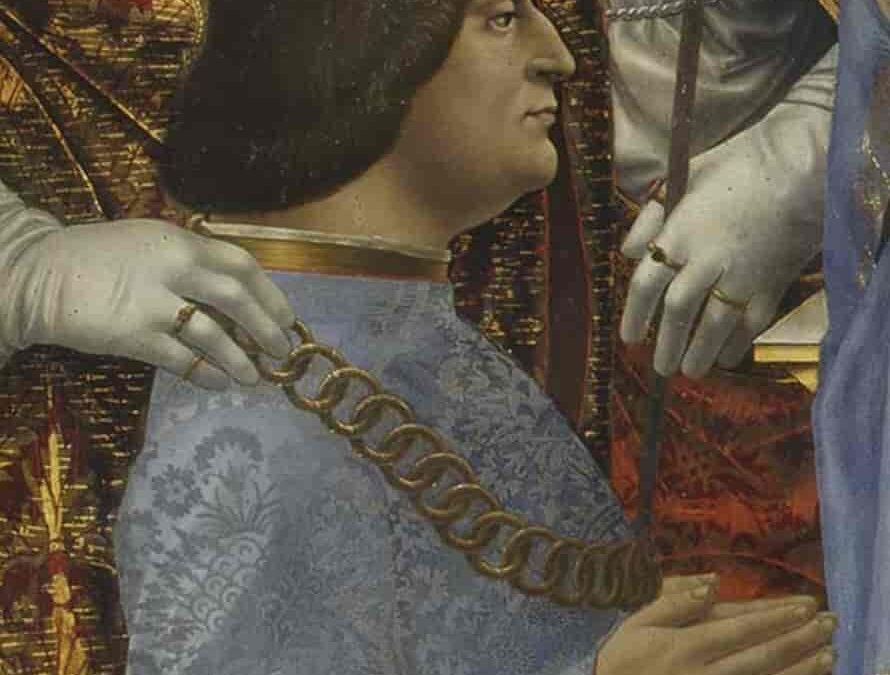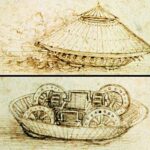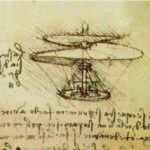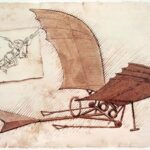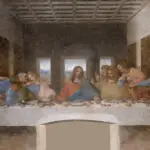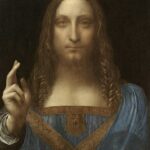Ludovico Sforza and Italian Renaissance
Ludovico Sforza is a remarkable figure of the Italian Renaissance. The full name of Ludovico Sforza is Ludovico Maria Sforza, also known as il Moro. He served as the Duke of Milan from 1494 to 1499. A dynamic duke, ambitious patron, and compelling political player, Sforza’s life and reign left a lasting mark on the annals of history.
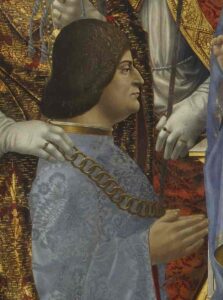
Ludovico Sforza (1452-1508)
The Rise of Ludovico Maria Sforza
Background of Ludovico Sforza
Born into the notable Sforza family in 1452, Ludovico Sforza grew up in the epicenter of Renaissance Italy’s power struggles. As the second son of Francesco Sforza, the Duke of Milan, Ludovico was not initially destined for leadership. However, fate had a different course charted for this ambitious scion.
Ludovico was more than a statesman; he was a humanist, deeply influenced by the intellectual currents of the time. His education was well-rounded, encompassing subjects from the humanities to the arts. This broad knowledge base would later serve as the foundation for his rule and patronage, impacting not only Milan but also the broader European Renaissance.
How Ludovico Sforza Rose to Power
The path to power for Ludovico Sforza was fraught with strife, stemming from the complex political landscape of 15th-century Italy. After the death of his elder brother, Galeazzo Maria Sforza, the ducal title fell to Galeazzo’s young son, Gian Galeazzo. However, the astute and ambitious Ludovico, unconvinced that a child could effectively govern Milan, seized the opportunity to claim the reins.
He appointed himself as the Regent on behalf of his young nephew, effectively taking control of Milan’s governance. However, his ambition didn’t stop there. With careful maneuvering, Ludovico managed to seize the title of Duke in 1494, seven years before the death of Gian Galeazzo. His rule as Duke would see Milan become one of the leading cities in Italy, a shining beacon of the Renaissance and a testament to the skill and ambition of Duke Ludovico Sforza.
Ludovico Sforza and Leonardo da Vinci
Sforza’s Recruitment For Leonardo da Vinci
One of Ludovico Sforza’s most enduring legacies was his patronage of the polymath genius, Leonardo da Vinci. Recognizing Leonardo’s unmatched talent, Ludovico invited him to Milan in 1482. This planned move was not merely about collecting art; it was a strategic endeavor to augment the cultural prestige of his court and city.
Roles Leonardo Played under Sforza’s Patronage
Under Sforza’s patronage, Leonardo da Vinci flourished as a painter, sculptor, architect, engineer, and scientist. Besides producing iconic art, Leonardo was involved in several projects, ranging from developing military strategies to designing canal systems. His diverse roles under Ludovico’s rule showcased his talents far beyond the realm of painting.
His Significant Projects and Inventions
Leonardo’s tenure in Milan under Ludovico’s patronage led to the conception of several groundbreaking projects and inventions. His works spanned numerous disciplines, including civil engineering, aeronautics, and military science. His sketches of ‘flying machines’ inspired future generations of aviation, while his designs for war machines revolutionized military engineering.
Key Artworks Commissioned by Sforza
While serving Ludovico, Leonardo da Vinci created some of his most celebrated works. These include the iconic ‘The Last Supper’, a mural that continues to captivate audiences with its emotional depth and compositional innovation. Leonardo also began the monumental project of a horse statue, known as the ‘Gran Cavallo’, which, although never completed, symbolized the ambition and grandeur of the Sforza court.
Another notable work is the ‘Madonna Litta’, a testament to Leonardo’s mastery over the portrayal of human emotion. Additionally, the Codex Atlanticus, a collection of Leonardo’s drawings and writings, compiled during his time in Milan, serves as an extraordinary record of Renaissance ideas.
Ludovico Sforza’s Patronage and Influence
Sforza’s Support for the Arts during the Renaissance
As a visionary patron, Ludovico Sforza realized the potential of art to enhance the cultural stature of Milan. His tenure saw an unprecedented surge in artistic creativity, marking Milan as a beacon of the Renaissance movement. From the recruitment of talented artists to the commissioning of large-scale public works, Sforza’s influence was instrumental in shaping the artistic landscape of the era.
Comparison with Other Patrons and Contemporaries
While the Medici family in Florence and the Borgia family in Rome were also notable patrons of the Renaissance, Ludovico’s patronage had a distinctive flair. Unlike his contemporaries, Sforza sought not only to commission works but also to create a vibrant cultural hub that fostered innovation.
Medici
The Medici, most notably Lorenzo de’ Medici, also known as ‘Lorenzo the Magnificent’, were great patrons of artists such as Sandro Botticelli. However, their focus was more on consolidating their political power, whereas Ludovico aimed to transform Milan into a renowned center of art and learning.
Borgia
On the other hand, the Borgia family, including the infamous Cesare Borgia, were more notorious for their political machinations than their artistic patronage. Compared to them, Sforza’s patronage was more sophisticated and art-centered.
Other Renowned Renaissance Artists
Under Sforza’s patronage, Milan attracted a wide range of artists and thinkers. Besides Leonardo da Vinci, other prominent artists of the time, including Michelangelo, Raphael, Titian, Giovanni Bellini, and Fra Angelico, also benefited from the vibrant cultural atmosphere that Sforza fostered.
The Meaning and Pronunciation of ‘Sforza’
Sforza Meaning
The name Sforza carries a deep significance in Italian history, directly translating to “force” or “strength” in English. This moniker perfectly embodies the boldness and fortitude that defined the Sforza family, particularly Ludovico, as they cemented their position in the annals of the Italian Renaissance.
Sforza and Ludovico Sforza Pronunciation
Pronunciation often acts as a bridge to understanding and appreciating the nuances of different cultures and languages. To pronounce “Sforza,” focus on the “Sf” sound, followed by “or-za” – /ˈsfɔrt.sa/.
The full name, Ludovico Sforza, incorporates an Italian masculine given name “Ludovico,” which should be pronounced as /luˈdɔː.vi.ko/. Therefore, the correct pronunciation for the entire name is /luˈdɔː.vi.ko ˈsfɔrt.sa/.
Ludovico Sforza in Popular Culture
Sforza’s Representation in “The Borgias” TV Series
Ludovico Sforza has found his way into the popular imagination through many channels, one of the most notable being his representation in the TV series “The Borgias.” In this series, Sforza is portrayed as a shrewd and power-hungry duke, highlighting his strategic mind and political acumen. It must be remembered, however, that while the series is rooted in history, it employs creative license to dramatize events and personalities.
Montblanc’s Ludovico Sforza Edition Pen
The enduring legacy of Ludovico Sforza also shines through the world of luxury accessories. Montblanc, a company synonymous with exquisite writing instruments, paid homage to Sforza by releasing a special edition pen named after him. The Montblanc’s Ludovico Sforza edition pen encapsulates the essence of the Renaissance with its intricate design, reflecting the grandeur and opulence of the era. Owning this pen is akin to holding a piece of history, an artifact that symbolizes the influence and significance of Ludovico Sforza.
The Legacy of the Sforza Family
Impact of the Sforza Family on the Renaissance
The Sforza family wasn’t just a footnote in the history of the Renaissance – they were one of its principal drivers, significantly shaping the cultural and intellectual revolution. The Sforza, particularly under the rule of Ludovico Sforza, provided a nurturing environment for arts, literature, and innovation, propelling Milan to be one of the leading city-states during the Renaissance. Their patronage attracted luminaries like Leonardo da Vinci and made Milan a vibrant center of creativity.
The State of the Sforza Family Today
The influence of the Sforza family today may not be as monumental as it was during the Renaissance, but they have undoubtedly left an indelible mark on history. While they no longer rule Milan, traces of their legacy can still be seen across the city, from the grand Sforza Castle, a significant historical landmark, to the numerous art pieces in museums that came into being due to their patronage. Furthermore, the Sforza family’s descendants continue to bear the prestigious name, a lasting reminder of their forebears’ substantial influence during one of humanity’s most creatively abundant eras.
Conclusion
In the grand tapestry of the Renaissance, Ludovico Sforza holds a place of prominence, a catalyst who sparked and nourished one of humanity’s greatest outpourings of creative genius. From his rise to power to his active support for the arts, Sforza’s actions and influence reshaped Milan, turning it into a beacon of culture, art, and innovation.
His foresight in recruiting Leonardo da Vinci, a figure now synonymous with Renaissance brilliance, speaks volumes of his commitment to nurture talent and innovation. His patronage led to the creation of some of the most iconic artworks in history, while also fostering advancements in engineering, warfare, and aeronautics.
